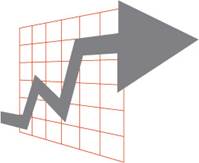 We’ve had some fun with archetypes before. Time again! A fun aspect of the foresight community is that futurists are always coming up with interesting questions. Elizabeth Merritt of the Center for the Future of Museums was asking about the New Equilibrium archetype. Remember in the archetypes approach, we treat the topic broadly as a “system,” in the sense of “the current way of doing things.” The baseline is present trends continued, plans fulfilled, and mainstream projections are accurate – no major surprises. In New Equilibrium, we try incorporate the notion of challenge and response. There is a surprise or disruption. The system is challenged. It responds in a way to save itself. It’s based on the notion that systems are stable and will tend to — and want to — return to base after being disturbed. They will actively seek this return to stability and be willing to make some compromises in order to preserve the essence of the system, e.g., bailing out the banks at the onset of the Great Recession. So, the system is changed by the compromises, but structurally it is still the same system. Even though we bailed out the banks, the system structure was not fundamentally transformed.
We’ve had some fun with archetypes before. Time again! A fun aspect of the foresight community is that futurists are always coming up with interesting questions. Elizabeth Merritt of the Center for the Future of Museums was asking about the New Equilibrium archetype. Remember in the archetypes approach, we treat the topic broadly as a “system,” in the sense of “the current way of doing things.” The baseline is present trends continued, plans fulfilled, and mainstream projections are accurate – no major surprises. In New Equilibrium, we try incorporate the notion of challenge and response. There is a surprise or disruption. The system is challenged. It responds in a way to save itself. It’s based on the notion that systems are stable and will tend to — and want to — return to base after being disturbed. They will actively seek this return to stability and be willing to make some compromises in order to preserve the essence of the system, e.g., bailing out the banks at the onset of the Great Recession. So, the system is changed by the compromises, but structurally it is still the same system. Even though we bailed out the banks, the system structure was not fundamentally transformed.
Our discussion got into the nature of the disruption. Is it one big disruption or a series of smaller ones? My response is that it depends on the response of the system. What gets its attention (so to speak) such that it feels the need to respond? What is perceived as threatening enough? I think it could be either one big threat or a wave of smaller ones. It’s easier to see the “big one” of course. But our new equilibrium scenarios in the Lumina Student Needs 2025+ project resulted from a culmination of forces, not a single big one (although some forces are bigger than others, in this case the I/T package of AI, Big Data, Singularity, etc.).
A quick clarifier: the interests or power structure of the current system actually do the responding, not the system). To tie up this point, if the system doesn’t respond, we’re still in the baseline….although the lack of a response could lead to collapse. Isn’t this fun 🙂 — Andy Hines
So, the system is changed by the compromises, but structurally it is still the same system. Even though we bailed out the banks, the system structure was not fundamentally transformed.
So what mechanisms or indicators enable us to conclude how or if a system has truly changed?
Good question! You got the logic! It is a subjective thing. One place to find clues is the language. In the response to the Great Recession, for example, the language was all about preserving the system and preventing collapse. Can’t let the banks fail, or the auto companies, because it might bring down the system. There was almost zero official language about it being time to re-do the system or re-write the rules, or come up with something new. The last time that happened was Bretton-Woods. The clue there was global leaders getting together with an explicit purpose of re-writing the rules of the game. The rule of the game are key, but really it requires a mindset or paradigm change to be willing to address the the fundamental rules of the system.